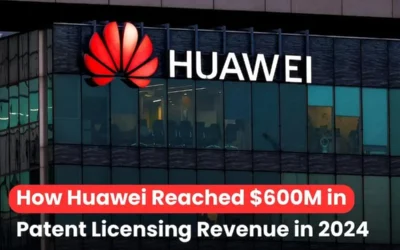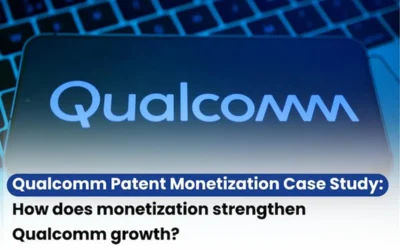
Patent monetization is often underestimated, but it’s actually one of the smartest ways businesses and investors can get the most value out of their innovations. Among the different IP strategies out there, this one stands out as a major revenue generator — and big companies know it. The IBM patent monetization case study is a perfect example. Instead of just using patents for protection, IBM turns its huge collection of inventions into a steady income stream. The company creates thousands of new innovations every year and smartly monetizes them. Keep reading to learn about the IBM patent monetization case study, methods IBM uses and the strategies that make its patent monetization so successful.
How Did IBM Generate Billions Through Patent Monetization and IP Deals?
Before diving into the patent monetization strategies IBM has used over the years, it helps to first understand just how much the company has earned from patent monetization. IBM (International Business Machines Corporation) is one of the world’s oldest and most influential tech giants, known for shaping the future of computing, AI, cloud systems, and even quantum technology. Over the decades, IBM has built one of the largest and most powerful patent portfolios in the industry, consistently ranking among the top U.S. patent recipients. Its patents span everything from AI and machine learning to cybersecurity, semiconductors, cloud computing, and next-gen quantum tech. This massive collection of high-value patents is one of IBM’s biggest strengths — helping it protect its innovations, stay competitive, and earn huge revenue through patent monetization.
And the numbers really show how impactful this strategy has been. While the latest figures aren’t publicly available, older data reveal just how big the earnings used to be. At its peak, IBM made over US $1 billion a year just from IP licensing, which says a lot about the power of patent monetization. Overall, since 1996, IBM has generated more than US $27 billion from patent licensing. Even in recent years, when revenue dipped from its peak, IBM still earned around US $397 million in 2022 and US $366 million in 2023 from licensing alone. With innovation growing faster than ever, these numbers are expected to rise again in the coming years.
What is the IBM Patent Monetization Case Study and Strategies Does IBM Use to Earn Billions?
Now, let’s talk about the IBM patent monetization case study, the strategies IBM uses to earn billions. IBM’s approach is one of the strongest in the tech world, built on smart planning, strong IP protection, and long-term innovation.
- One of its biggest strategies is licensing its patents to other companies — basically letting them use IBM’s technology in exchange for fees. This method alone has brought in billions over the years.
- IBM also relies on cross-licensing agreements, where it swaps patent rights with other big tech players. This helps the company avoid legal fights while still gaining access to important technologies.
- And when necessary, IBM isn’t shy about enforcing its patents through litigation, which not only protects its inventions but also shows how valuable its IP really is.
- On top of that, IBM continuously builds and maintains a huge, future-focused patent portfolio, especially in areas like AI, cloud computing, quantum technology, and cybersecurity. All these strategies together make IBM a powerhouse in patent monetization.
Read Also: Future of Patent Licensing – The Impact of Data and AI in Transforming IP Future
Conclusion
IBM’s success shows how powerful patent monetization can be when it’s backed by smart strategy and consistent innovation. By turning its massive patent portfolio into a revenue-generating asset, IBM not only protects its technology but also strengthens its position in the global tech landscape. With licensing, cross-licensing, litigation, and future-focused patent development, IBM proves that patents aren’t just legal documents — they’re valuable tools that can drive growth, profit, and long-term competitiveness.









